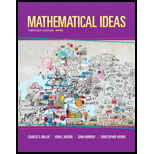
Mathematical Ideas (13th Edition) - Standalone book
13th Edition
ISBN: 9780321977076
Author: Charles D. Miller, Vern E. Heeren, John Hornsby, Christopher Heeren
Publisher: PEARSON
expand_more
expand_more
format_list_bulleted
Question
Chapter 15.4, Problem 23E
To determine
The best apportionment method for violations of fairness standards from the provided method - Hamilton, Jefferson, Webster, Huntington-Hill and Adams
Expert Solution & Answer
Want to see the full answer?
Check out a sample textbook solution
Students have asked these similar questions
An election resulted in Brown winning, with Kelly coming in a close second, and Whitmore being a distant third. If Kelly had received a majority of first place votes, which is the primary fairness criterion violated in this election?
Independence of Irrelevant Alternatives (IIA) Criterion
Condorcet Criterion
No fairness criteria are violated
Majority Criterion
Monotonicity Criterion
Which fairness criterion is always satisfied by the plurality with elimination method?
monotonicity criterion
irrelevant alternatives criterion
head-to-head criterion
majority criterion
An election resulted in Brown winning, with Kelly coming in a close second, and candidate Whitmore being a distant third. If in a head-to-head comparison a majority of people prefer Kelly to Brown or Whitmore, which is the primary fairness criterion violated in this election?
Condorcet Criterion
Independence of Irrelevant Alternatives (IIA) Criterion
Majority Criterion
No fairness criteria are violated
Monotonicity Criterion
Chapter 15 Solutions
Mathematical Ideas (13th Edition) - Standalone book
Ch. 15.1 - Choosing a Poster Dog by the Plurality Method A...Ch. 15.1 - Choosing a Poster Dog by the Plurality Method A...Ch. 15.1 - Choosing a Poster Dog by Alternative Methods For...Ch. 15.1 - Choosing a Poster Dog by Alternative MethodsFor...Ch. 15.1 - Observing the Effect of the Number of Candidates...Ch. 15.1 - Observing the Effect of the Number of Candidates...Ch. 15.1 - Observing the Effect of the Number of Candidates...Ch. 15.1 - Observing the Effect of the Number of Candidates...Ch. 15.1 - Observing the Effect of the Number of Candidates...Ch. 15.1 - Observing the Effect of the Number of Candidates...
Ch. 15.1 - Applying Four Voting Methods to a Voter Profile...Ch. 15.1 - Applying Four Voting Methods to a Voter Profile...Ch. 15.1 - Applying Four Voting Methods to a Voter Profile...Ch. 15.1 - Applying Four Voting Methods to a Voter Profile...Ch. 15.1 - Applying Four Voting Methods to a Voter Profile...Ch. 15.1 - Applying Four Voting Methods to a Voter Profile...Ch. 15.1 - Applying Four Voting Methods to a Voter Profile...Ch. 15.1 - Applying Four Voting Methods to a Voter Profile...Ch. 15.1 - Holding a Runoff Election One common solution to...Ch. 15.1 - Prob. 20ECh. 15.1 - Prob. 21ECh. 15.1 - Prob. 22ECh. 15.1 - Prob. 23ECh. 15.1 - Prob. 24ECh. 15.1 - Prob. 25ECh. 15.1 - Prob. 26ECh. 15.1 - Prob. 27ECh. 15.1 - The Pairwise Comparison Method Each table...Ch. 15.1 - Prob. 29ECh. 15.1 - Prob. 30ECh. 15.1 - The Borda Method Each table represents a Borda...Ch. 15.1 - Prob. 32ECh. 15.1 - Prob. 33ECh. 15.1 - Prob. 34ECh. 15.1 - Prob. 35ECh. 15.1 - Prob. 36ECh. 15.1 - The Coombs Method The Coombs method of voting is a...Ch. 15.1 - Prob. 38ECh. 15.1 - Prob. 39ECh. 15.1 - Prob. 40ECh. 15.2 - Identifying Violations of the Majority Criterion...Ch. 15.2 - Identifying Violations of the Majority Criterion...Ch. 15.2 - Identifying Violations of the Majority...Ch. 15.2 - Identifying Violations of the Majority Criterion...Ch. 15.2 - Identifying Violations of the Condorcet...Ch. 15.2 - Identifying Violations of the Condorcet Criterion...Ch. 15.2 - Identifying Violations of the Condorcet Criterion...Ch. 15.2 - Identifying Violations of the Condorcet Criterion...Ch. 15.2 - Prob. 9ECh. 15.2 - Prob. 10ECh. 15.2 - Prob. 11ECh. 15.2 - Prob. 12ECh. 15.2 - Prob. 13ECh. 15.2 - Prob. 14ECh. 15.2 - Prob. 15ECh. 15.2 - Prob. 16ECh. 15.2 - Prob. 17ECh. 15.2 - Prob. 18ECh. 15.2 - Prob. 19ECh. 15.2 - Irrelevant Alternatives in a Hare Method Election...Ch. 15.2 - 21. Explain why a violation of the majority...Ch. 15.2 - Prob. 22ECh. 15.2 - Prob. 23ECh. 15.2 - Prob. 24ECh. 15.2 - Prob. 25ECh. 15.2 - Prob. 26ECh. 15.2 - Prob. 27ECh. 15.2 - Prob. 28ECh. 15.2 - Prob. 29ECh. 15.2 - Prob. 30ECh. 15.2 - Prob. 31ECh. 15.2 - Prob. 32ECh. 15.2 - Prob. 33ECh. 15.2 - Prob. 34ECh. 15.3 - Find each quantity (to the nearest whole number)...Ch. 15.3 - Find each quantity (to the nearest whole number)...Ch. 15.3 - Find each quantity (to the nearest whole number)...Ch. 15.3 - Find each quantity (to the nearest whole number)...Ch. 15.3 - Solve each problem.
5. New Trees for Wisconsin...Ch. 15.3 - Apportioning Computers to Schools Enrollments for...Ch. 15.3 - Assigning Faculty to Courses The English...Ch. 15.3 - 8. Apportioning Sailboats to Resorts The number of...Ch. 15.3 - Prob. 9ECh. 15.3 - 10. Show that the Webster method apportionment of...Ch. 15.3 - Prob. 11ECh. 15.3 - Prob. 12ECh. 15.3 - Prob. 13ECh. 15.3 - Prob. 14ECh. 15.3 - Prob. 15ECh. 15.3 - Find the Huntington-Hill cutoff point for rounding...Ch. 15.3 - Creating a Profile of School Bus Riders Create a...Ch. 15.3 - Prob. 18ECh. 15.3 - Prob. 19ECh. 15.3 - Prob. 20ECh. 15.3 - The standard quotas rounded up to the nearest...Ch. 15.3 - Prob. 22ECh. 15.3 - Prob. 23ECh. 15.3 - Prob. 24ECh. 15.4 - Quota Rule Violations with the Jefferson Method In...Ch. 15.4 - Quota Rule Violations with the Jefferson Method In...Ch. 15.4 - Quota Rule Violations with the Jefferson Method In...Ch. 15.4 - Quota Rule Violations with the Jefferson Method In...Ch. 15.4 - Alabama Paradox with the Hamilton Method In each...Ch. 15.4 - Alabama Paradox with the Hamilton Method In each...Ch. 15.4 - Alabama Paradox with the Hamilton Method In each...Ch. 15.4 - Alabama Paradox with the Hamilton Method In each...Ch. 15.4 - Population Paradox with the Hamilton Method In...Ch. 15.4 - Population Paradox with the Hamilton Method In...Ch. 15.4 - Population Paradox with the Hamilton Method In...Ch. 15.4 - Population Paradox with the Hamilton Method In...Ch. 15.4 - New States Paradox with the Hamilton Method In...Ch. 15.4 - New States Paradox with the Hamilton Method In...Ch. 15.4 - New States Paradox with the Hamilton Method In...Ch. 15.4 - New States Paradox with the Hamilton Method In...Ch. 15.4 - Violations of the Quota Rule? For each...Ch. 15.4 - Violations of the Quota Rule? For each...Ch. 15.4 - Violations of the Quota Rule? For each...Ch. 15.4 - Prob. 20ECh. 15.4 - Prob. 21ECh. 15.4 - Prob. 22ECh. 15.4 - Prob. 23ECh. 15.4 - Prob. 24ECh. 15.4 - Prob. 25ECh. 15.4 - 26. The Jefferson and Adams methods are both...Ch. 15 - How many different complete rankings are possible...Ch. 15 - Prob. 2TCh. 15 - Prob. 3TCh. 15 - Prob. 4TCh. 15 - Prob. 5TCh. 15 - Why is the irrelevant alternatives criterion an...Ch. 15 - Prob. 7TCh. 15 - Prob. 8TCh. 15 - Prob. 9TCh. 15 - Prob. 10TCh. 15 - Prob. 11TCh. 15 - Prob. 12TCh. 15 - Prob. 13TCh. 15 - Prob. 14TCh. 15 - Prob. 15TCh. 15 - Prob. 16TCh. 15 - Prob. 17TCh. 15 - Prob. 18TCh. 15 - Prob. 19TCh. 15 - Prob. 20TCh. 15 - Prob. 21TCh. 15 - Prob. 22TCh. 15 - Prob. 23TCh. 15 - Prob. 24TCh. 15 - Prob. 25TCh. 15 - One hundred seats are to be apportioned to 4...Ch. 15 - Prob. 27TCh. 15 - Prob. 28TCh. 15 - Prob. 29TCh. 15 - Explain the Alabama paradox.Ch. 15 - Prob. 31TCh. 15 - Prob. 32T
Knowledge Booster
Learn more about
Need a deep-dive on the concept behind this application? Look no further. Learn more about this topic, subject and related others by exploring similar questions and additional content below.Similar questions
- An election resulted in Candidate A winning, with Candidate B coming in a close second, and candidate C being a distant third.If in a head-to-head comparison a majority of people prefer B to A or C, which is the primary fairness criterion violated in this election? Condorcet Criterion Monotonicity Criterion Majority Criterion Independence of Irrelevant Alternatives Criterionarrow_forwardPLEASE HELP Which fairness criteria, if any, were violated by using Plurality-with-elimination? LAST QUESTIONarrow_forwardWhich apportionment paradox may be produced by the Adams' method but not the Webster method?arrow_forward
- How many votes were cast?How many votes are needed for a majority?Which candidate is the winner using Plurality-with-elimination?Which fairness criteria, if any, were violated by using Plurality-with-elimination?arrow_forwardPlurality with elimination method always satisfies the following fairness criteria based on Arrow’s Impossibility Theorem: a Majority criterion and monotonicity criterion b Majority criterion c Head-to-head criterion and irrelevant alternatives criterion d Monotonicity criterion and irrelevant alternatives criterion Time left for this assessment: 55:43arrow_forwardDetermine the ; *Hypothesis *Calculation *Conclusionarrow_forward
- Place a checkmark next to each election method that satisfies all four the fairness criteria discussed. Borda Count Method Plurality Method Pairwise Comparison Method None of the above methods Plurality with Elimination Methodarrow_forwardLabor relations topic and explain at least 5 cases in which the rule/law has been applied in various judgementsarrow_forwardJury Census data for a certain county show that 19%of the adult residents are Hispanic. Suppose 72 peopleare called for jury duty and only 9 of them are Hispanic.Does this apparent underrepresentation of Hispanics callinto question the fairness of the jury selection system?Explain.arrow_forward
- Mr. CDE was tasted to do a CPM in preparation for the annual strategic planning of ABC Company. The resutls based on the total weighted score are as follows: ABC Comppany, Competitor A, Competitor B, and Competitor C garnered 3.20, 3.40, 3.00, and 3.15, respectively. Which of the following statements is correct? Competitor A is the most competitive and ABC Company is the least competitive Competitor B is the most competitive followed by ABC Company, Competitor B, and Competitor C Competitor C is the least competitive All Choices and correct All Choices are incorrectarrow_forwardAlex believes the honor roll students at his school have an unfair advantage in being assigned to the science class they request. He asked 500 students at his school the following questions: "Are you on the honor roll?" and "Did you get the science class you requested?" The results are shown in the table below: Help Alex determine if all students at his school have an equal opportunity to get into the science class they requested. Show your work, and explain your process for determining the fairness of the class assignment process.arrow_forwardHi, Based on the attachment: Suppose that in West Hartford median household income is $60,000, and all other characteristics are the same as the average district. What percent of voters would vote yes in West Hartford? Would a bond initiative pass?arrow_forward
arrow_back_ios
SEE MORE QUESTIONS
arrow_forward_ios
Recommended textbooks for you
 Discrete Mathematics and Its Applications ( 8th I...MathISBN:9781259676512Author:Kenneth H RosenPublisher:McGraw-Hill Education
Discrete Mathematics and Its Applications ( 8th I...MathISBN:9781259676512Author:Kenneth H RosenPublisher:McGraw-Hill Education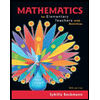 Mathematics for Elementary Teachers with Activiti...MathISBN:9780134392790Author:Beckmann, SybillaPublisher:PEARSON
Mathematics for Elementary Teachers with Activiti...MathISBN:9780134392790Author:Beckmann, SybillaPublisher:PEARSON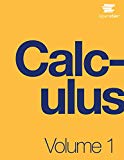
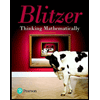 Thinking Mathematically (7th Edition)MathISBN:9780134683713Author:Robert F. BlitzerPublisher:PEARSON
Thinking Mathematically (7th Edition)MathISBN:9780134683713Author:Robert F. BlitzerPublisher:PEARSON Discrete Mathematics With ApplicationsMathISBN:9781337694193Author:EPP, Susanna S.Publisher:Cengage Learning,
Discrete Mathematics With ApplicationsMathISBN:9781337694193Author:EPP, Susanna S.Publisher:Cengage Learning,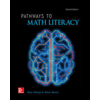 Pathways To Math Literacy (looseleaf)MathISBN:9781259985607Author:David Sobecki Professor, Brian A. MercerPublisher:McGraw-Hill Education
Pathways To Math Literacy (looseleaf)MathISBN:9781259985607Author:David Sobecki Professor, Brian A. MercerPublisher:McGraw-Hill Education

Discrete Mathematics and Its Applications ( 8th I...
Math
ISBN:9781259676512
Author:Kenneth H Rosen
Publisher:McGraw-Hill Education

Mathematics for Elementary Teachers with Activiti...
Math
ISBN:9780134392790
Author:Beckmann, Sybilla
Publisher:PEARSON


Thinking Mathematically (7th Edition)
Math
ISBN:9780134683713
Author:Robert F. Blitzer
Publisher:PEARSON

Discrete Mathematics With Applications
Math
ISBN:9781337694193
Author:EPP, Susanna S.
Publisher:Cengage Learning,

Pathways To Math Literacy (looseleaf)
Math
ISBN:9781259985607
Author:David Sobecki Professor, Brian A. Mercer
Publisher:McGraw-Hill Education
What Are Research Ethics?; Author: HighSchoolScience101;https://www.youtube.com/watch?v=nX4c3V23DZI;License: Standard YouTube License, CC-BY
What is Ethics in Research - ethics in research (research ethics); Author: Chee-Onn Leong;https://www.youtube.com/watch?v=W8Vk0sXtMGU;License: Standard YouTube License, CC-BY